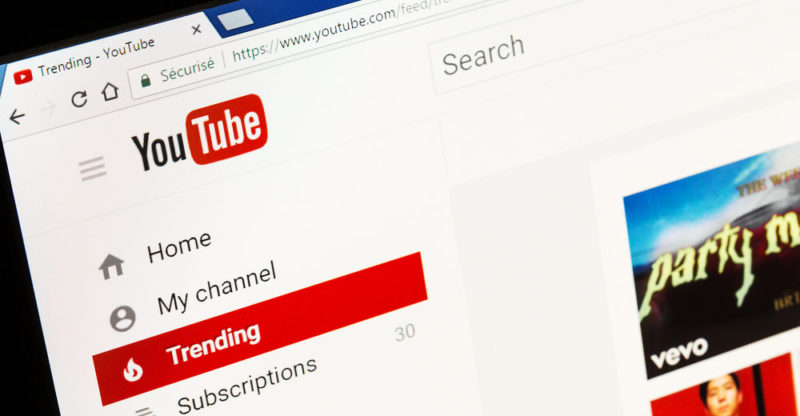We explain what social networks are and how they are classified. Also, what are its general characteristics, advantages and disadvantages.
What are social networks?
Social networks are a set of digital platforms for recreation and social interaction among its various users, whether people or companies , whose forms of community and relationships have recently become so widespread that they have led to the establishment of a whole “2.0 culture” that would take place online.
These virtual platforms allow the sending of messages, communication in real time and the dissemination of content in different ways, among users who are connected to each other, that is, who are “friends” or “followers” (according to the denomination used by the platform).
The massive appearance of social networks has caused a certain stir among industrialized societies , given that since they are not regulated in any way, they lend themselves to misinformation, the appropriation of personal data or other forms of privacy that require new ways of citizen education. .
Examples of social networks are: Facebook, Twitter, Instagram, Tinder, Linkedin, Happn, Pinterest, etc.
Characteristics of social networks :
Virtual communities

The main thing when talking about social networks is to understand that they are part of a growing community with access to the Internet and with time to invest in it : time for leisure, work and socialization.
The latter has made it possible to reshape the public space , to the point that certain very popular social networks act as a meeting point and centralize user information, thus creating true virtual communities, thanks to which people from different backgrounds and different life history can coincide and share thanks to their personal tastes or their ways of using the network.
Types of social networks

There are different ways to classify social networks, according to their target audience, main subject of the relationship or according to their platform, namely:
- According to your target audience. They can be horizontal or vertical.
- Horizontal They are aimed at all audiences, without a specific thematic focus or a specific community, but at the “general public” of the Internet.
- Vertical They are conceived based on a thematic axis that is the one that groups the community, that is, a certain degree of specialization, for example: employment networks, video game networks, etc.
- According to the main subject of the relationship. They can be human, content or inert.
- Human. They give rise to relationships between users, according to their social profile and tastes, hobbies, etc.
- Of content. The interaction is centered on the information shared by the users, and not on themselves. Of this type are document exchange networks, etc.
- Inert. The most innovative, allow objects, places, brands and even deceased people to be networked.
- According to your platform. They can be metaverses or Web.
- Metaverses. These social networks require the user to have a particular connection (WOW) of the client-server type.
- Web. Social networks based on the traditional structure of the Internet.
Profile or identity

Most social networks handle large portions of their users’ data : email addresses, photographs , telephone numbers, likes, hobbies, friends, even part of their personal, professional or love history. All this allows the construction of “profiles” with which the user is shown to others.
The point is that these profiles do not always respond to the truth of the people , but to certain narcissistic desires of how they would like to be, and can become a source of anguish or emotional (and real) suffering if this idealization of the person is frustrated. individual. This phenomenon is studied by psychologists and educators
Massiveness
One of the great attractions (especially for advertising companies) of social networks is their massiveness. The main social networks have millions of users worldwide to whom content, such as an advertisement or a news item, can be exposed .
This means that large social networks compete in importance (and win in immediacy) with traditional newspapers and other forms of mass information.
Connectivity

The connectivity of new technologies has been used by social networks to have a presence in almost all technological gadgets : computers, tablets, smartphones. The presence of a company or an individual in them can even be seen as a requirement to reach new audiences and be “on par” with their audience.
Personalization on Social Networks
Another important and appreciated aspect of social networks is hyper personalization or “customization”, which consists of fully adapting to the tastes and personality of the user , also allowing direct interaction with other users and even with business accounts, in charge from an administrator called “CM or Community Manager”. In this way, the networking experience is intimate and unique.
Algorithms of Social Networks

Social networks operate based on algorithms that organize information to show us more of what we like and less of what we don’t. Thus, when we validate a comment, an advertisement or a news item, we give feedback to the system so that it adapts even more to our specific tastes.
Usage requirements
Social networks have minimum requirements for use. Most of them ask for a certain age already reached in their users , and even some – such as dating – ask for the age of majority. Of the rest, the registrations are usually free and consist of a certain amount of information with which the user must feed their profile.
Advantages of Social Networks

The advantages of Social Networks have to do with their immediacy and their massiveness , never before experienced by industrialized humanity, as well as their personalization of the experience, to such a degree that many of the interactions in networks (the “likes” or the “Favorites”, etc.) are used in the marketing world as measures of the success of a campaign or a product .
On the other hand, Social Networks allow us to centralize our contacts , manage birthday dates, reconnect with old friends or make new ones, all without necessarily leaving home.
Disadvantages of Social Networks

The disadvantages of Social Networks point to the break with the presence of others , that is to say, that we do not know how to socialize in person but in writing, building generations dependent on the machine and alienated, locked in a niche that little or nothing exposes them to different tastes or to the opposite thought .
In the same way, the algorithms of social networks privilege content similar to the one we have chosen (with a “like” or a “favorite”, etc.), restricting the opportunities to receive real information , not filtered by likes or dislikes. ideologies of the user, so they end up becoming “echo chambers” where people read only opinions similar to their own. This is often denounced as an undemocratic effect of social media.
The above content published at Collaborative Research Group is for informational and educational purposes only and has been developed by referring reliable sources and recommendations from technology experts. We do not have any contact with official entities nor do we intend to replace the information that they emit.














